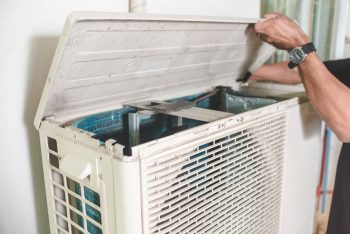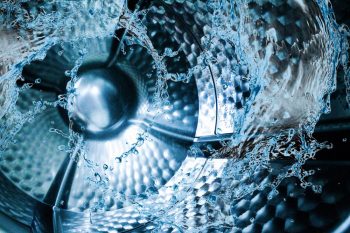
Lint on clothing can be a frustrating problem for many people. Not only does it make your clothes look less clean, but it can also be tough to remove. But don’t worry, in this comprehensive guide, we will walk you through some effective ways to remove lint from clothes in a washing machine.
To remove lint from clothes in a washing machine, sort your laundry and wash lint producers and lint attractors separately. Turn clothes inside out before washing and use a fabric softener or white vinegar in the rinse cycle. Avoid overloading the machine to allow water to flow freely between clothes. After washing, dry clothes with microfiber cloths to pick up lint. You can also use a lint roller or masking tape to remove remaining lint. Regular maintenance of your washing machine can also help reduce lint production.
Understanding Lint
Before we get into the solutions, let’s first understand what lint is and why it forms on your clothes. Lint is small fibers that separate from the surface of cloth during the washing or drying process. Common causes of lint on clothes after washing in a washing machine include a build-up of fluff in the washing machine filters, washing fabrics made of natural fibers like wool and cotton, washing lint-producing items with lint-attracting items, overloading the washer, and not checking pockets for items like tissues or paper.
Types of Washing Machines and Lint Accumulation
The type of washing machine you have can impact lint accumulation. Top-loading washing machines tend to have a significant amount of lint buildup compared to front-loading machines. This is because top-loading washers collect and distribute lint and fabric softener more effectively than front-loading washing machines.
Clothing Materials and Lint Production
Certain clothing materials are more likely to produce lint. These include fleece sweat suits, chenille items, new terry cloth towels, flannel pajamas, cotton underwear and socks, and woolen clothes like sweaters and blankets. To prevent lint, it’s recommended to sort lint attractors from lint producers and wash them separately.
Effective Techniques to Remove Lint
Here are some effective techniques to remove lint from clothes in a washing machine:
- Sort your laundry: Separate clothes that are prone to shedding lint from those that attract lint. Wash them separately to prevent lint transfer.
- Turn clothes inside out: This helps reduce lint buildup on the visible side of the clothes.
- Use fabric softener or white vinegar: Add fabric softener or one cup of distilled white vinegar to the final rinse cycle of your laundry. This helps loosen lint from the fabric by relaxing the fibers.
- Don’t overcrowd the washing machine: Ensure there’s enough space for water to flow freely between clothes, which helps reduce lint buildup.
- Dry clothes with microfiber cloths: Place the lint-covered clothes in a dryer with a couple of microfiber cloths. The lint will stick to the microfiber cloths, and you can remove the remaining lint using a clothes brush or sticky lint roller.
- Use a lint roller or masking tape: Rub the lint-covered areas with a lint roller or masking tape to remove lint from clothes.
Washing Machine Settings
You can adjust your washing machine settings to minimize lint production. Use the right detergent, avoid overloading, choose appropriate cycles, sort laundry, adjust water level, shorten wash time, wash in cold water, use gentle or permanent press cycle, add fabric softener, and keep the machine clean.
Preventative Measures
To reduce lint formation during a wash cycle, consider sorting your laundry, washing clothes inside out, using a gentle wash cycle, not overloading the machine, using the correct water level, using a detergent with enzymes, adding fabric softener or distilled white vinegar, hand-washing lint-prone clothes, and cleaning your washing machine.
Products and Home Remedies to Remove Lint
There are several products and home remedies that can effectively remove lint from clothes in a washing machine. These include laundry lint removers, distilled white vinegar, fabric softeners, lint catchers, and mesh bags.
Washing Machine Maintenance
To ensure minimal lint production in your washing machine, follow these maintenance practices: clean the lint filter regularly, separate lint-producing fabrics from lint-collecting fabrics, shorten wash time for smaller loads and lightly soiled garments, use the correct type and amount of detergent, don’t overload the machine, clean the door seal and drum, clean dispenser drawers and filters, balance the load.
In conclusion, removing lint from clothes in a washing machine is not as daunting as it seems. With the right techniques, products, and maintenance practices, you can effectively reduce and remove lint from your clothes. Happy washing!
Frequently Asked Questions
What types of detergents are best for reducing lint?
Detergents with enzymes are best for reducing lint. Enzyme-based detergents break down stains and dirt without damaging the fabric, which can help reduce the amount of lint produced during a wash cycle.
How often should I clean the lint filter in my washing machine?
It’s recommended to clean the lint filter in your washing machine after every wash. This helps to prevent a build-up of lint and keeps your machine running efficiently.
Can I use any type of vinegar to reduce lint?
For best results, use distilled white vinegar. This type of vinegar is known for its cleaning properties and is less likely to leave residue on your clothes.
Is there a specific type of fabric softener that is best for reducing lint?
Any fabric softener will help in reducing lint as they relax the fibers of the fabric, making it harder for lint to stick. However, ensure to use the recommended amount to avoid any residue on your clothes.
Do all types of washing machines have lint filters?
Not all types of washing machines have lint filters. Some modern machines are designed to self-clean, while others may have a filter but it’s not user-accessible. Always refer to your machine’s manual for specific information.
How does washing in cold water help reduce lint?
Washing in cold water helps to reduce the wear and tear on your clothes, which can result in less lint being produced. Additionally, certain types of fabric are less likely to shed fibers when washed in cold water.












